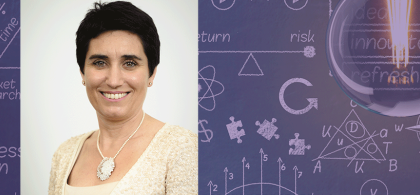
Artificial Intelligence, moving towards augmented human intelligence
Will technology based on artificial intelligence make us stupid? Or can it increase human capabilities? Can it also better prepare students for a digitised and changing working world? Alain Goudey, associate dean of digital technology at NEOMA, offers his perspective.
The integration of AI (artificial intelligence) or generative artificial intelligence is revolutionising how we teach, learn and even think. Not only does it give us, the teachers, the ability to personalise education and enrich and diversify the pedagogic approach, but it also helps develop the diversity of human capabilities.
Enriched and personalised pedagogic content
Certain students need to put what they’re learning into perspective and connect ideas. These students are called reflexive learners. For them, artificial intelligence can imagine question-answer systems or generate ideas (example: what can be the interesting problems found in a science fiction novel?). It can offer detailed feedback on a first draft, or it can provide in-depth explanations on different topics. Other learners are called active, meaning they learn better by doing. AI creates simulations and educational games for them. This practice-based experience in a virtual environment reinforces understanding and memorisation. There are also others who absorb information better through social interactions and they are interpersonal learners. In this case, AI can facilitate the creation of virtual learning communities with a tutor. It can propose group activities and moderate discussions and role-playing games. Vocal assistants and language learning apps are the most well known examples of these programmes. They offer interactive language practice, with corrections and suggestions in real time. These tools can detect nuances in pronunciation, grammar and vocabulary use and they can provide personalised feedback that facilitates more in-depth and nuanced language learning.
Creation: AI helps us exceed our limitations
AI can also stimulate creative intelligence. This type of mindset that likes to think innovatively, solve problems in original ways and create new ideas can find a source of inspiration in these tools. In particular, what comes to mind are text generators (ChatGPT, Google Gemini, Claude 3, Mistral Large, etc.), photo editors (Midjourney, Stable Diffusion, etc.) and music composition programmes (Suno, Udio). Instead of being a threat, they can also eliminate the blank-page syndrome faced by writers or enrich their prose with vocabulary and style suggestions. In the design field, AI can help design innovative products, exploring a wide range of configurations, integrating criteria such as sustainability, aesthetics, technical and mechanical constraints and functionality. Last year, Toyota started to use it in the design of its vehicles. The engineers were able to exceed the limitations of the human imagination and explore shapes and structures that were unthinkable two years ago.
And what about emotional intelligence? It can also find a genuine stimulant in AI. In fact, certain educational apps and platforms are able to analyse facial expressions or the tone of a person’s voice and deduce how they may feel inside at any given moment, which can be very useful when preparing for public speaking. Users become aware of their own emotions and those of others and they are then able to understand and manage them. Even better, we are currently seeing the arrival of AI-based simulations and virtual role-playing games. These offer secure environments where learners can experience different social and emotional situations. They learn to navigate through complex interactions and develop skills such as empathy, negotiation and conflict resolution. Such an exercise would be difficult to do in a more traditional classroom setting.
AI requires a critical outlook
It is important to make sure that we don’t become too addicted to AI. In education, it could also lead to a drop in interpersonal skills, such as communication and cooperation, vital skills in the professional world. Taken to the extreme, this could lead to emotional dependence on these virtual entities. The phenomenon has already been observed in China. Users seek out AI assistants to receive comfort and advice and emotional support available at any time.
The integration of AI into the field of education of course brings up other concerns. First, there is the issue of managing data generated by students while they use the platforms. This data are collected, stored and analysed. This is personal information that must be protected by strict protocol. It requires compliance with GDPR and the upcoming AI Act. Then, there is the issue of the biases that it can reproduce and amplify. AI algorithms are designed by humans and based on selected data. The risk is the loss of critical perspective and the homogenisation of points of view around the world.
It is therefore essential that humans develop a new form of intelligence for understanding how AI functions and a critical outlook on this technology. The average responses of a robot cannot be taken for granted. We need to hone them and make them better. All studies have shown that an alliance between humans and AI is by far the most effective.
There is also a risk of inequality in access to the education improved by AI. The institutions that have sufficient resources should not be the only ones to offer these advanced technologies to their communities. This would only widen the already existing gap of inequality in society.


